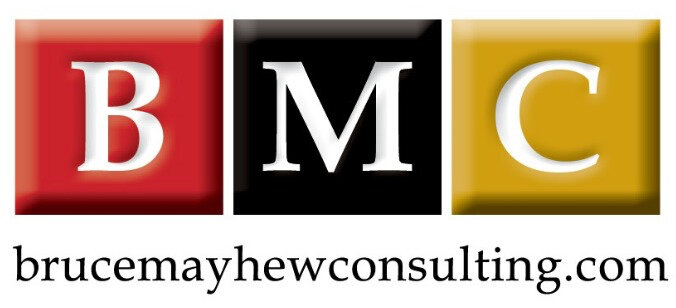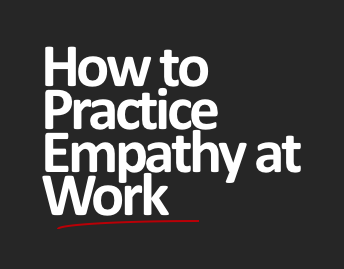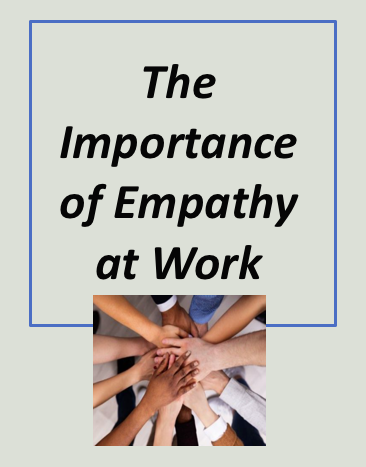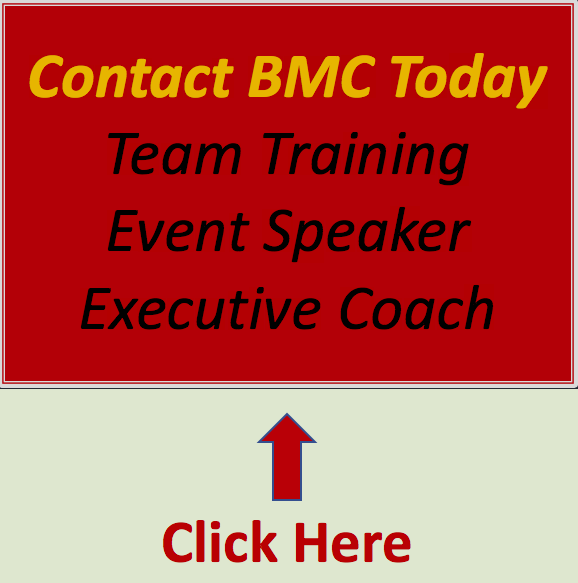Tone is one of the most important parts of our email or text messages. Why? Because tone influences what our readers understand and how they feel about us. Our tone also influences our readers motivation to do what we are asking. We choose to be respectful, thoughtful and considerate… or not.
We often don’t take a moment to consider if we are writing rude, bossy and passive aggressive email and text message. Unfortunately, by not investing those few seconds, the compounding impact of all of our messages likely is having a negative impact on our personal and professional reputation not to mention increased stress and even lower productivity for everyone.
We choose the type of relationships we have
There are two kinds of relationships we choose have with others. We choose to have trusting, respectful, thoughtful and mutually beneficial relationships, or we choose to build frustrating, rude and stressful relationships.
Respect, appreciation and being treated with kindness are important building blocks of loyal work relationships. You know from your own experience that when you feel respected and appreciated you will usually make sure you do your very best, go the extra mile and even go our of your way to work with that other person. Alternatively, when we feel disrespected, even the most capable and creative of us will often deliver a ‘Meets Expectations’ performance and have a ‘Do what I’m asked – nothing more’ attitude. For this reason (and others), a bossy or aggressive writer doesn’t only cause stress and frustration for others when they write disrespectful, rude and/or passive aggressive messages; they also create stress and frustration for themselves.
So, how can you keep your messages from sounding rude, bossy, self-important, disrespectful and passive aggressive?
1. Be polite.
People deserve to feel respected even if they are getting a paycheque. I don’t mean waste time with lots of social niceties. In fact, getting to the point is critical and something everyone prefers.
Being polite and respectful is one of the top values people say they appreciate in others. So, this means use words like Hi, Hello, Please and Thank You. It’s natural and polite to walk into someone’s office or call them on the phone and say, “Hi Bruce”. So why not when we email?
For example, if you were to receive the following message – especially if it was unexpected, you could easily interpret it as rude, bossy and disrespectful.
“What is the pricing on the XYZ account and when is the renewal date?”
This next version isn’t perfect, but it does sound less aggressive, more polite and more respectful… just by saying Hi, using their name and saying thanks.
“Hi Jessy,
What is the pricing on the XYZ account and when is the renewal date?
Thanks”
The one variation on this rule is if you and I write to each-other all day long. In this case, as long as you and I have talked – literally talked and agree that saying “Hi” and “thanks, isn’t necessary, then it is OK to drop it (but it may still be nice to add ‘Hi Bruce, hope you had a great weekend” at the end of our first email on a Monday morning).
2. Manage other peoples expectations… and our own expectations.
There is nothing worse than interrupting what you are doing or rescheduling a meet because your boss sent you what sounds like an urgent request, only to find out when you deliver it that they didn’t need it for a day or two… or three. It often leaves us feeling manipulated and that our bosses don’t respect us and the time we dedicate to scheduling our commitments.
The solution is to be crystal clear and always include:
What you need (likely you already do this)
When you need it (helps others prioritize their schedule)
Why you need it (helps others prioritize and often helps them determine how to format what they send to you)
What you understand (helps everyone be clear about what each of us understand)
What you will do (helps us not duplicate work… or worse yet miss something that needs to be done)
Using the example from point #1, the following is an even better way to build trusting, respectful, mutually beneficial relationships within a short message while we also manage other peoples expectations… and our own.
“Hi Jessy,
Please let me know by 10AM tomorrow the pricing on the XYZ account and when the renewal date is so I can include it in the proposal that is due at noon. If you need additional resources please let me know.
Thanks.”
The added benefit of the approach of this short, two-sentence email is that besides being polite, it tells Jessy what you need, when you need it and why it is important you get it by 10AM. It clearly manages Jessy’s expectations and your own. And, while you could eliminate the second sentence and still be OK, I do like it because it gives Jessy some control because it provides an opportunity to let you know if they need additional support.
3. Let someone know when they did a good job.
Again, you may be emailing or texting someone you pay, but everyone wants to know the work they are doing is important and they made a difference. So consider adding a line like “Those are exactly the numbers I needed.” Or “That presentation deck looks great”.
Be assured I am not recommending we praise others every time they do something, but every once in a while I urge you to recognize their work. Your 5-second investment from time to time will create positive energy and goodwill that cannot be measured.
4. Remember you are writing to someone else.
Most of us write as if we are writing to ourselves – with our own priorities, needs and experience but even if we are working in the same department it is likely that our priorities are different.
Example 1. Your priority may be to get a marketing forecast out by end of week, while mine is to balance my advertising spend for one of our biggest clients.
Example 2. You may have lots of industry experience and knowledge while I may be new or from a different department so don’t understand all that is involved and who to include when you ask for a ‘Agile Project Forecast’.
Example 3. Your ‘quick question’ may not have a ‘quick answer’. You may think the answer is simple, but I need to organize input from three different departments to get you the answer.
So when you are writing to someone else always try to be aware of the other peoples experience, understanding of industry language and priorities. And as I mentioned above, be sure to consider manage expectations as outlined in point 2 including providing others an opportunity to ask questions or give you feedback.
5. Keep from sounding passive aggressive.
So far we’ve talked a lot about tone, so now lets focus in on passive aggressive messages.
I have a relative who is the queen of passive aggressive. She always seems to have an alternative motive or double meaning. The sad part is even when she isn’t being passive aggressive the rest of the family are wondering “What does she really mean?” or “What does she really want?” That is not the reputation you want to build for yourself.
Sounding passive aggressive is a bit habit forming; some people do it without even realizing it. And, expecting certain people to be passive aggressive is also habit forming. For example, if I expect you to be passive aggressive – or even rude or bossy, unless you are really careful I will always interpret your messages that way. Fortunately, people can unlearn bad habits and can rebuild their reputation.
The best way to avoid sounding passive aggressive is to re-read your messages. Ask yourself, if you were to receive it, would you be taken back? If you have the slightest feeling it is, rewrite.
That said, here are a few of my favourite passive aggressive approaches to avoid.
A: Stop asking the same question over and over. Just because you want a different answer, asking me again and again isn’t going to change reality.
B: “As per my last email”. You can hear the writers’ attitude. Perhaps it is frustration in repeating themselves over and over… or perhaps they are angry about something and someone else… but if you write it, know it will likely negatively impact your relationship with that person and perhaps others who see that email.
C: “No doubt you are aware”. This is about as blatantly passive aggressive as you can get. If someone missed something it’s right to bring their attention to it but, you don’t have to be insulting – even if they did overlook it on purpose. Remember, other people may read your message at some point and not know the whole story.
D: “For future reference” can be interpreted in many ways. Often, it means “don’t bother me again when the solution is obvious if you gave it a second of thought or did your job.” It’s worth noting that what is obvious to you may not be to me. I may be in another department, new, under extremely tight deadlines or perhaps my boss is asking me to send this and I really wish I didn’t have to. So next time – do your own reputation a favour and leave out these three words. “Here is where you will find files on this topic,” is much more friendly than “For future reference, here is where you will find files on this topic,”.
E: “Thanks in advance” is one of my least favourite statements. For the few times I receive it, it is usually followed by a request that is not my responsibility, the bottom of my priority list or junk email.
6. When you ask for a meeting, be prompt with the start and stop time.
I know this doesn’t have anything to do with tone in writing; unfortunately running over timelines happens all too often, causing major frustration with employees, coworkers and suppliers. It is also passive aggressive behaviour so I thought I would include it.
Nowadays many of us have back to back online meetings using Zoom or Microsoft Teams. We go directly from one meeting to another with no break. Showing respect for others means we start meetings on time. It also means we end meetings on time… or early (imagine that). If we are a meeting organizer or presenter and force 10 coworkers and other department heads to wait for us because we are 5-minutes late, that means we just cost our company 50-minutes of productivity. If this happens routinely we build a reputation as selfish, entitled, disorganized and even unaware of how hard others are working.
Key time management and reputation saving tip is to start meetings on time and be sure to cover the critical elements first. Then, if there is time go ahead and discuss topics that are not part of the agenda and meeting purpose. Too often the reverse is done and the real meeting agenda is squeezed into the last 10-minutes and we find we are late for our next meeting.
Whether you make $30,000 or $300,000 respect the people you work with and yourself.
Conclusion:
Turning the table for a moment, when you receive a rude, bossy and passive aggressive email or text message, there is always a way to reply and not join their club. Unfortunately, when we respond using passive aggressive phrases, that will reflect back on us. Remember, it’s all about your brand and your reputation; if someone is being ridiculous, foolish or unprofessional that is all about them and their reputation. And, when we keep ourselves under control and professional – especially at those times – people will notice… and that is a good thing for us.
For everyone else, it’s always important to remember that tone is always one of the most important parts of our email or text messages. The examples I’ve shared here are some of the most effective ways to eliminate rude, bossy and passive aggressive email tone from our messages and instead use our email and text messages to build trusting, respectful, mutually beneficial relationships.
So, as you move forward writing email and text messages I hope you routinely take a moment to consider how others will interpret your messages. The few seconds you spend getting into the habit of writing great messages will save you countless time and help you build a personal and professional reputation you can be proud of.
Thank you for reading about how to eliminate rude, bossy and passive aggressive email tone from your writing.
Bruce
About Bruce and Bruce Mayhew Consulting.
Bruce is Corporate Trainer, Keynote Speaker and Executive Coach.
Bruce Mayhew Consulting specializes in customized Difficult Conversations, Crucial Conversations or Conflict Management Training, Email Etiquette Training, Leadership & New Leadership Development, Generational Differences, Time Management Training and other soft skills training solutions in Toronto and across Canada. Bruce is also an Executive Coach to a few select clients.
Bruce is an experienced motivational speaker in Toronto and has inspired audiences across Canada and within the USA and the UK. Bruce works hard to always make sure your training event, conference, retreat, or annual general meeting is a success.






















